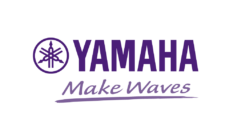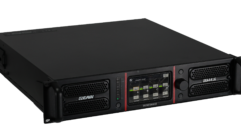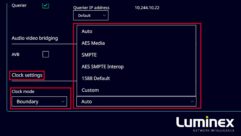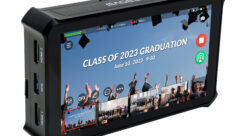Ever wonder why people avoid pressing that “upgrade firmware” button on their devices? I have a three-part theory:
Some people suffer from a basic lack of awareness. They don’t know a better solution is out there. Some people are busy. They flat-out avoid updates because it might require them to learn something new. Some people are weary of the consequences of updates. It’s just easier to suffer through the current and familiar quirks/workarounds and simply turn a blind eye to the promise of improvement.
This applies to the world of AV programmers. We struggle on a daily basis with the outdated process of AV control, dedicated hardware strung together with old tech, and antiquated programming languages. We either accepted these issues as necessary evils, or cling to the “If it ain’t broke, don’t fix it” mentality. Or maybe we are simply unaware of the alternative.
Enter the new breed of AV customers: IT end users and decision makers. They are demanding control solutions that can easily integrate with standard IT infrastructures, and they want to enable their teams to potentially monitor and service these systems.
All of a sudden, the “firmware update” within our industry, which I’m calling “AV Control v2.0,” can no longer be ignored. It’s time to hit the “update button” and challenge our existing toolbox, and align our work with more standard IT environments and modern programming methodologies.
Here are some ways to support that reality.
REMOVE THE COMPLEXITY
In a typical meeting room, we are programming up to 90 separate control links. When a small change is made to the system— a control ID change, a component added, or even a simple gain structure change—there are repercussions that require several back-and-forth conversations between us and the DSP programmer, which can hinder getting a space up and running. With a system that combines DSP duties, control processing, conference camera control, and routing under one platform, you start to eliminate hardware and more importantly, tons of integration points. There is no back-and-forth because the platform does that work for you! In this way, the repercussions of one change aren’t quite as daunting and the complexity of building a system is dramatically reduced.
EMBRACE OPEN STANDARDS AND MODERN LANGUAGES
Our AV programming toolkit has remained relatively contained within our industry, primarily because our programming languages have not evolved at the same pace as the IT world. We have spent a good portion of our careers learning these arcane languages with only a few outlets for training and sharing. However, the available tools have evolved. There are better control solutions out there that use standard IT languages and paradigms that are far easier to use and much more accessible outside of this industry. This is a huge opportunity for us! Transitioning to more open standards and modern control programming languages will enable AV programmers to work even more efficiently. The value of our code does not diminish simply because we arrived at the solution with better tools. Quite to the contrary; working in some of these streamlined toolsets is going to open up business opportunities that the older architecture simply would not allow. It also frees us up: we can now have more bandwidth and resources to focus on developing solutions that are more advanced. On top of that, being able to offer a system to the IT customer that empowers them to make those minute-to-minute troubleshooting adjustments will open more doors. The IT customer is more likely to embrace the solution if they know it is as accessible as the rest of their infrastructure.
ALLOW FOR SCALABILITY
As companies start to expand their AV capabilities on a global scale, they are looking to invest in technology they can grow at the pace of their business. Platform-based solutions built around IT standards eliminate the need to “rip and replace” the technology, and allow the end user to scale up or down while maintaining their entire AV programming design and end point configuration. Furthermore, as these systems scale within the IT infrastructures, the need for system-wide management of AV devices becomes vitally important. Becoming familiar with software-based management will open doors for additional value-added programming opportunities and even additional revenue streams for our companies.
Let’s do this.
This a firmware update that our AV programming community deserves. It’s time to simplify our process and expand our business offering.
Greg Mattson is product manager for installed systems, QSC










